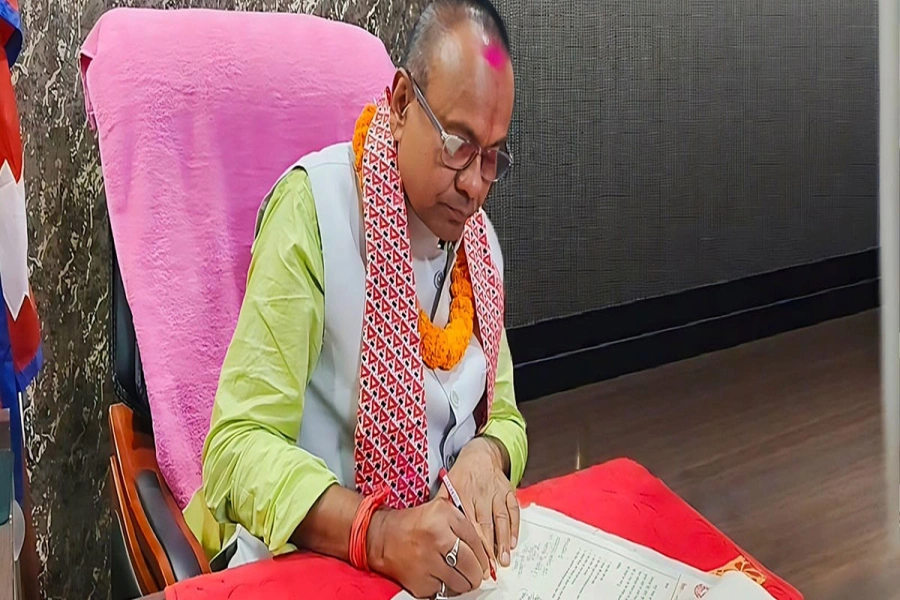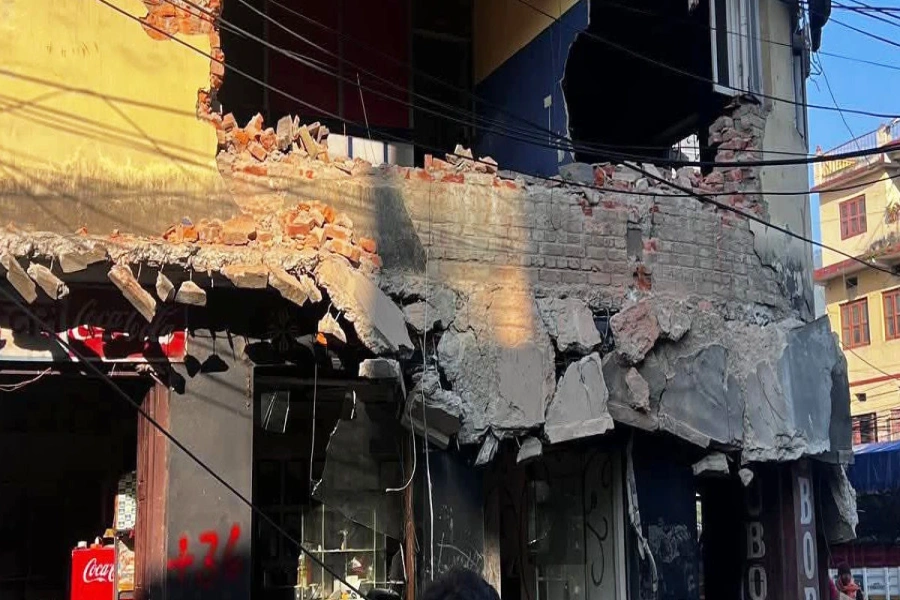Senior journalist Sudheer Sharma recently authored two significant books on the evolving dynamics of Nepal-China relations. Of the two, Himal Pariko Huri: Ganatantra Pachhi Pheriyeko Nepal-Cheen Sambandha – the Nepali title translates as The Storm Across the Himalayas: The Changing Dynamics of Nepal-China Relations After the Republic) is of particular interest to readers seeking to understand how China's involvement in Nepal has shifted since the abolition of the monarchy. The book begins with a discussion of China's efforts to present itself to the world post-2008. The Storm Across the Himalayas spans 277 pages, with 211 pages covering the main content. The remaining pages are dedicated to endnotes, references, and indexes, enhancing the material for novice researchers interested in exploring the past, present, and future of Chinese interests in Nepal. Published by Kitab Publication, the book is written in Nepali and divided into six chapters: New Activism, Examining Communist Cooperation, Attempts at Military Partnership, The Forgotten Tibetans, Bridge between Two Boulders, and Expectations and Illusions with China.
Attempts to communize the Nepali Army
While diplomatic relations with China were re-established under King Mahendra's reign, he sought to keep the Nepali Army independent of Communist China’s influence. In 1990, at the end of the Panchayat era, China offered to sell arms to Nepal, but the offer was declined. After King Gyanendra's coup, India and the US suspended military aid to the Nepali Army, prompting China to step in with weapons in a bid to increase its influence. During the communist-dominated period before Nepal’s constitution was drafted, China took advantage of every opportunity to strengthen ties with the army. Notably, despite its initial opposition to the Maoists' armed movement in Nepal, China began supporting Prachanda after he became Prime Minister. This shift was highlighted when Maoist commander Nanda Kishor Pun was sent to China for a National Defense Strategy (NDS) course and later appointed as the top commander of the proposed unified force, raising suspicions within the Nepali Army regarding China's motives. During a visit by a Chinese general, a deal for over Rs 1.43 billion in military aid was signed, surprisingly by army generals rather than politicians. In 2018, under the KP Oli administration, China continued to foster both a "strategic partnership" and "communist cooperation" with Nepal, underscored by President Xi Jinping’s visit. While China views "strategic" as representing its long-term interests, Nepal seems to see it as a means to pursue economic development.
Cooperation through micromanagement
Nepal’s communist movements have historically been rooted in the Maoist ideology. Influenced by Indian communist leader Charu Mazumdar from Naxalbari, many Nepali communist leaders looked to Mao as their ideal. The Maoists used Jhapa and Naxalbari as regular bases, leading to the violent Jhapa Rebellion of 1969. Sharma describes the Nepali communists' attraction to China as "one-sided love" (p. 85). However, China considered Nepal’s monarchy to be more reliable than the communists, who were seen as co-religionists. After the 1962 border conflict between China and India, Maoist extremists used Nepali territory to support uprisings in the strategically significant "Chicken's Neck" area, a 17-kilometer strip between Bangladesh and Nepal. Chinese media publicly supported this uprising. Indian leader Charu Mazumdar sent Mao "eight historical documents," which were delivered to Mao’s intelligence officer by a Nepali ally, part of China’s effort to stir Nepali communist sentiment and expand its geopolitical influence over India.
Rules of a relationship

During Prime Minister Oli's visit to China in 2018, a one-hour meeting with Xi Jinping extended by 40 minutes, during which Xi emphasized the close ideological alignment between Nepal’s UML and China’s CPC, both Marxist parties. Nepali Ambassador Mahesh Maske noted that Chinese officials even suggested that the chairmen of Nepal's two left-wing parties (UML and Maoist) jointly run the government. After Chinese envoy Hou Yanqi took office in Kathmandu in 2018, China’s political involvement became more visible. Yanqi mediated internal disputes within the NCP, arranged a phone conversation between Presidents Bidya Devi Bhandari and Xi Jinping, and met with Prime Minister Oli, urging the NCP not to split. Even after Nepal’s parliament was dissolved, Yanqi persisted in her efforts, embodying China's political micromanagement in Nepal. This book sheds light on the extent of China’s involvement, bringing it to public attention.
Tibetan refugees and enduring geopolitics
Nepal has long been on China’s geopolitical radar due to the Tibet dispute. Over 60 years have passed since Tibetan refugees settled in Nepal. In the post-1990s, pressure from China led to the cessation of identity card issuance for Tibetan refugees. This book highlights the persecution Tibetan refugees have endured in Nepal and demonstrates that their plight is a geopolitical issue for China.
There was significant commotion in Nepal in 1973 when the Dalai Lama returned from a pilgrimage to Lumbini. The book illustrates how China has placed Buddhism and Lumbini under its geopolitical influence, preventing others from organizing events there without Chinese involvement. This was evident in 2024 when an international conference was postponed due to Chinese pressure. The book suggests that China views Tibetan refugees as a "Tibetan card" for the West and the US. Following the passage of the US Asia Reassurance Initiative Act (ARIA), which supports efforts to restore democracy in China and preserve Tibetan customs and culture, China has closely monitored the situation.
The railway saga
Before assuming office as Prime Minister, KP Oli visited the Nepal-China border at Rasuwagadhi and announced that the proposed Kerung-Kathmandu railway was a top priority. Some NCP leaders predicted that the railway connecting China would become a reality within six or seven years. However, the Chinese have a long history of promising railway projects in Nepal, dating back to the 1960s. Despite the initiation of a feasibility study for the Kerung-Kathmandu railway in 2023, it remains uncertain when, or if, the project will be completed. Chinese Ambassador Hou Yanqi urged caution, reminding Nepal that the railway project should not be taken lightly. Communist leaders in Nepal have since tempered their enthusiasm for the Chinese railway dream.
Expectations are like illusions
Nepal appears to struggle with understanding China. The end of Nepal’s monarchy and the rise of Xi Jinping’s authoritarianism in China seem contradictory. Despite maintaining a friendly relationship with China, Nepal's experiences suggest that understanding China’s complex and secretive state administration is difficult. There are concerns that Nepal could fall into a debt trap, as other countries have, by relying too heavily on Chinese infrastructure projects. The Chinese ambassador’s efforts to bring Pokhara International Airport under the Belt and Road Initiative (BRI), along with the delays and irregularities in Chinese contractor-led projects, have caused growing disillusionment among the Nepali people regarding China.







































